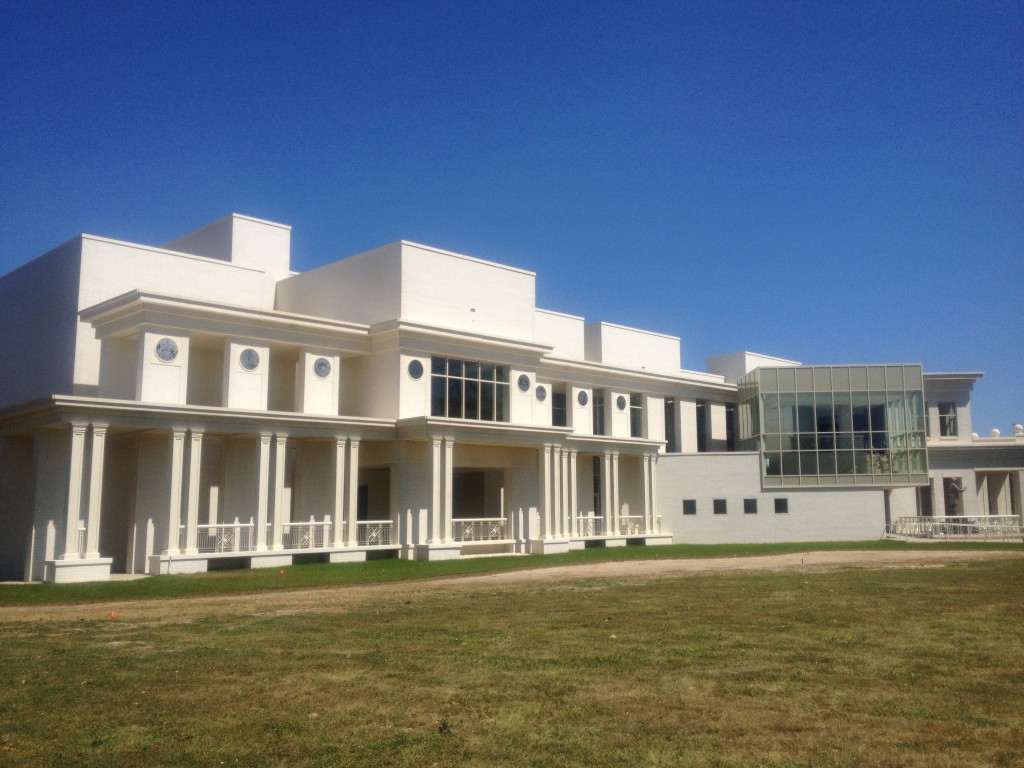
The newly-rebuilt Jefferson Davis Presidential Library in Biloxi, MS. It opened on March 16, 2013. It has a library, restoration center, and gift shop.
Yipee! A new state to discover!
At the end of March, Dave and I made a trip to Keesler AFB in Biloxi, MS for Dave’s laser-eye surgery. We spent about 5 days in the area; before his procedure, we were able to do a little bit of sightseeing. Besides the numerous casinos, there are a couple of neat tourist attractions that we enjoyed.
First on our list was to pay a visit to Beauvoir, which was Jefferson Davis’ home after the Civil War. He was living as a disenfranchised not-really-citizen at the time he acquired this house, because he had some of his rights stripped as part of his treason indictment. In fact, he was nearly broke when he came to Beauvoir as a house guest in 1877. The country at the time was very divided on his right to remain in the U.S., but in the deep south he was left alone. On the grounds stands the Jefferson Davis “Presidential” Library**, which operates in the same way as other presidential libraries around the country. The property is managed by the Sons of Confederate Veterans.
**Being that the United States never formally recognized the Confederate States of America as a sovereign state, one could argue that Jefferson Davis wasn’t really president of anything. But I’m not going to get too deep into that argument.
The grounds took a beating during Hurricane Katrina in August 2005. You can see a picture of the house right after the storm in this CNN Article. The library was destroyed, and priceless artifacts were blown all over the place. It took over 2 years to restore the home, and it was able to reopen in summer 2008.
The story of how Davis came upon this house in the 1870s is an interesting one. He was nearly broke, and the owner of the house, Sarah Dorsey, heard about Davis’ financial difficulties and invited him to stay in one of the guest cottages adjacent to the house. This is where Jefferson Davis penned The Rise and Fall of the Confederate Government.
As Ms. Dorsey learned of her impending death, she and Mr. Davis arranged for him to purchase the estate in 1879, but she ended up bequeathing the estate to him altogether, even before Mr. Davis finished paying the installments.
Jefferson Davis was the proud owner of Beauvoir upon Sarah Dorsey’s death in 1879. He lived in the home until his death 10 years later.
The new curator of the estate has deemed that everything in the house and on the grounds needs to be such as how it existed in the 1870s. When Dave and I took a tour of the house, it was fascinating to see the items that had been restored.
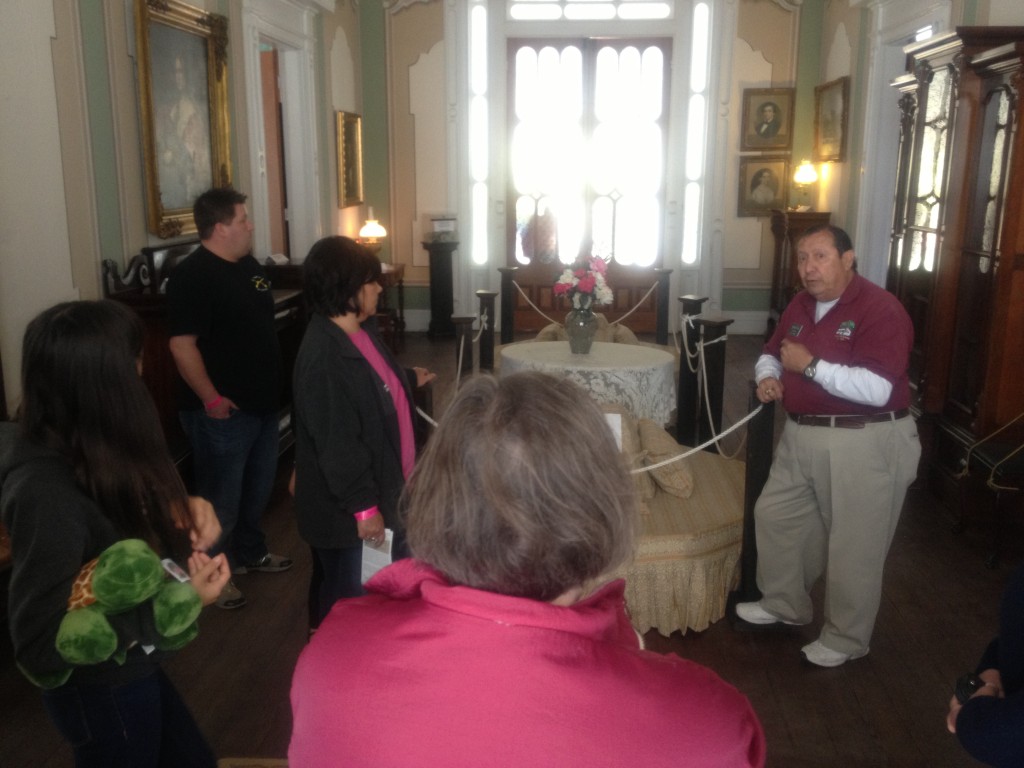
This gentleman on the right spoke of Mr. Davis as if he were a rock star. What a great man, smart man, etc. he is.
I was in awe of the beautifully preserved furnishings and the beautiful doors. In fact, I couldn’t get enough of the artistry of the doors. The original doors were painted in a faux oak finish, to give the impression of wealth, when in actuality, the doors were made of cypress. During the post-Katrina restoration, the doors were given back that faux-oak finish, thanks to artists brought up from Virginia who spent hundreds of hours painstakingly bringing back the faux bois appearance.
As for the “Presidential” Library, it had just had its grand reopening about week prior to our visit, on March 16th. It seems as though the grand structure overshadows the more understated Beauvoir main home. Thanks to the generosity of FEMA, $14.5 million was allocated to reconstruct the library. There was a lot of disdain over that allocation of funds, and if you were to see the facility, its beauty rivals what I’ve seen of many other *real* Presidential Libraries.
Truth? I’m very mixed about this. I’m all for preservation efforts of all sides of history. It’s just as important to learn about our enemies as our friends. And let us not forget Jefferson Davis’ contributions to the United States before he sided with the Confederacy: from his influences in forming the Smithsonian Institution, to serving as Secretary of War under Franklin Pierce, to even his service as a U.S. Senator from Mississippi, you can’t deny that he was a legitimate American public servant. Therefore, on a general level, I feel that the artifacts and national historic landmark destroyed deserves funding for restoration.
But does it need this?
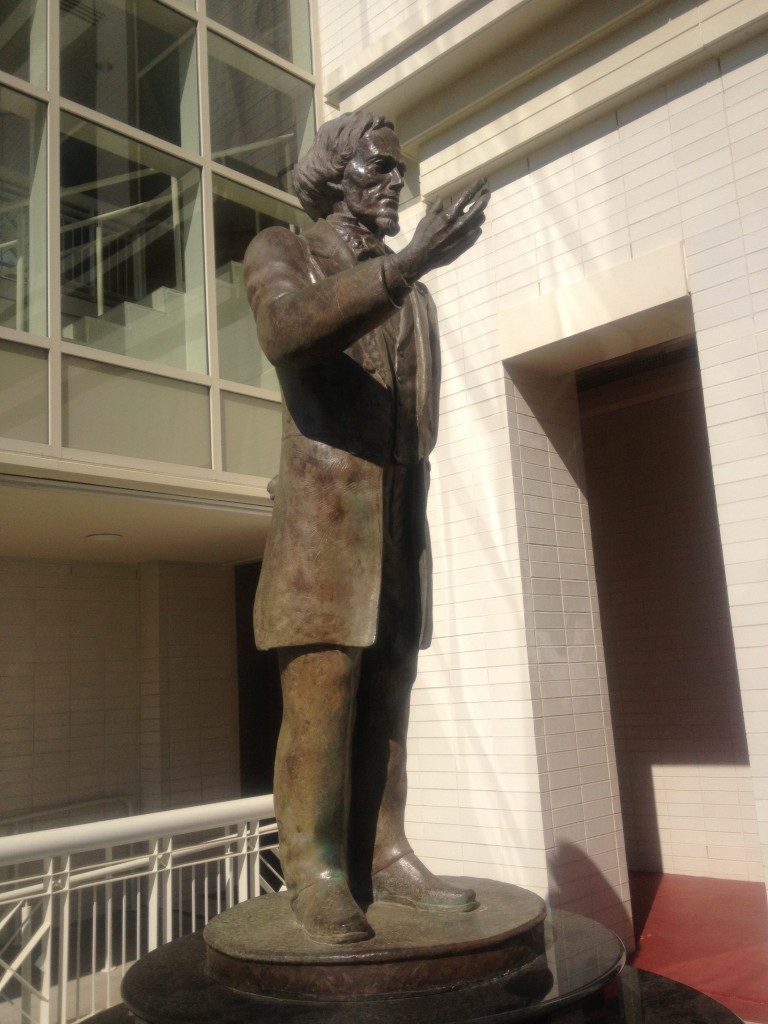
Now…I can’t say for certain that federal funds covered this statue. For all I know, it could be privately donated.
It all seems very elaborate to me. Hopefully they’ve learned from Katrina (and Camille in 1969) and have designed a near weatherproof facility.
Something else that caught Dave’s and my attention was the machinery that was yanking up trees. This was going on right as the museum was closing.
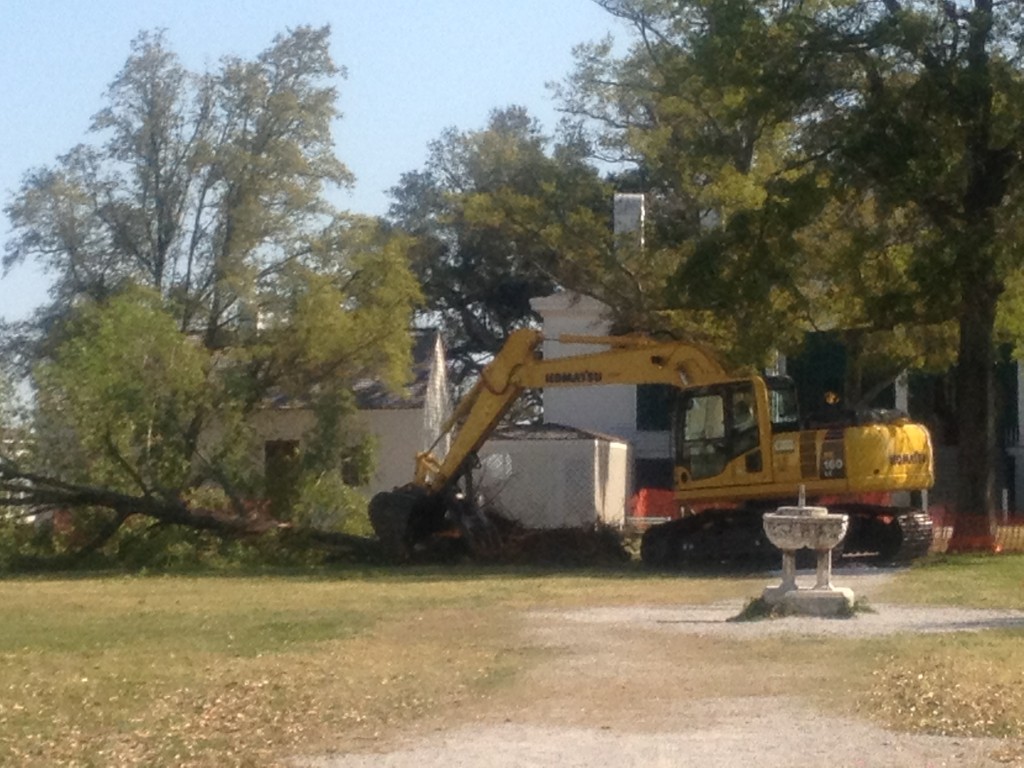
Whoa — they’re yanking up those huge beautiful trees! The building right behind the yanked-up tree is Beauvoir’s kitchen building. I’m not sure what kind of trees those were that were being pulled, but apparently they were the “wrong” trees.
Dave asked our tour guide about the destruction of the perfectly good trees, and it seems that the curator included the trees on the property with his mission to return Beauvoir to its original state…only the native trees and plants were to remain on the property, which includes what’s left of over 100 live oak trees.
Those oak trees have recently become part of a new holiday tradition, in fact.
Further inland from the main house and the “Presidential” Library is a confederate cemetery. You have to walk across a bridge about 300 yards to get there. There’s also some land back in there that is used to host living histories and Civil War reenactments. The cemetery is managed by the Sons of Confederate Veterans and has many of the former soldiers who passed away while Beauvoir was used as a Confederate veterans’ home between 1902-1953.
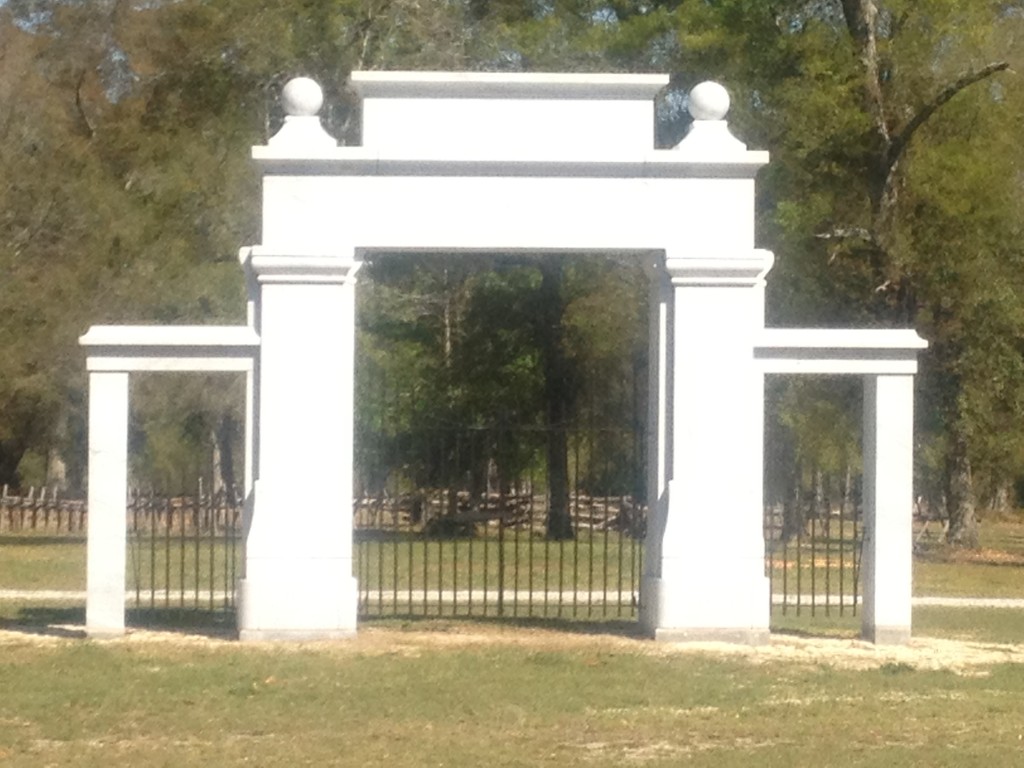
This is a full reconstruction of the marble gate that was destroyed during Katrina. It’s at the front of the Confederate cemetery.

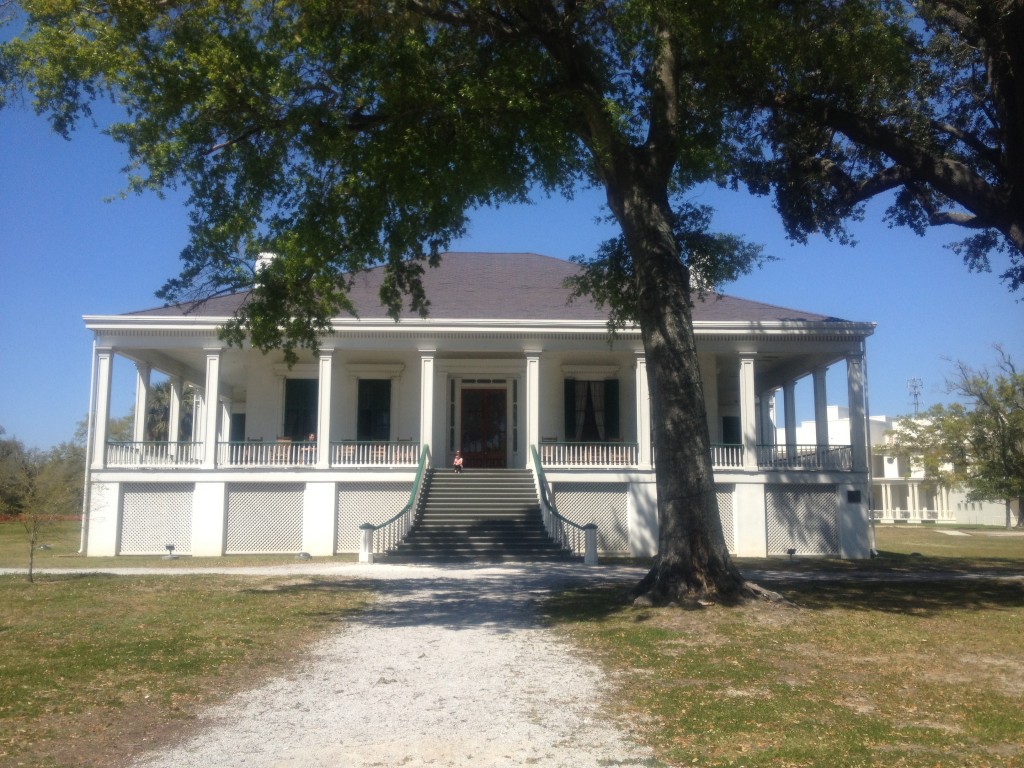

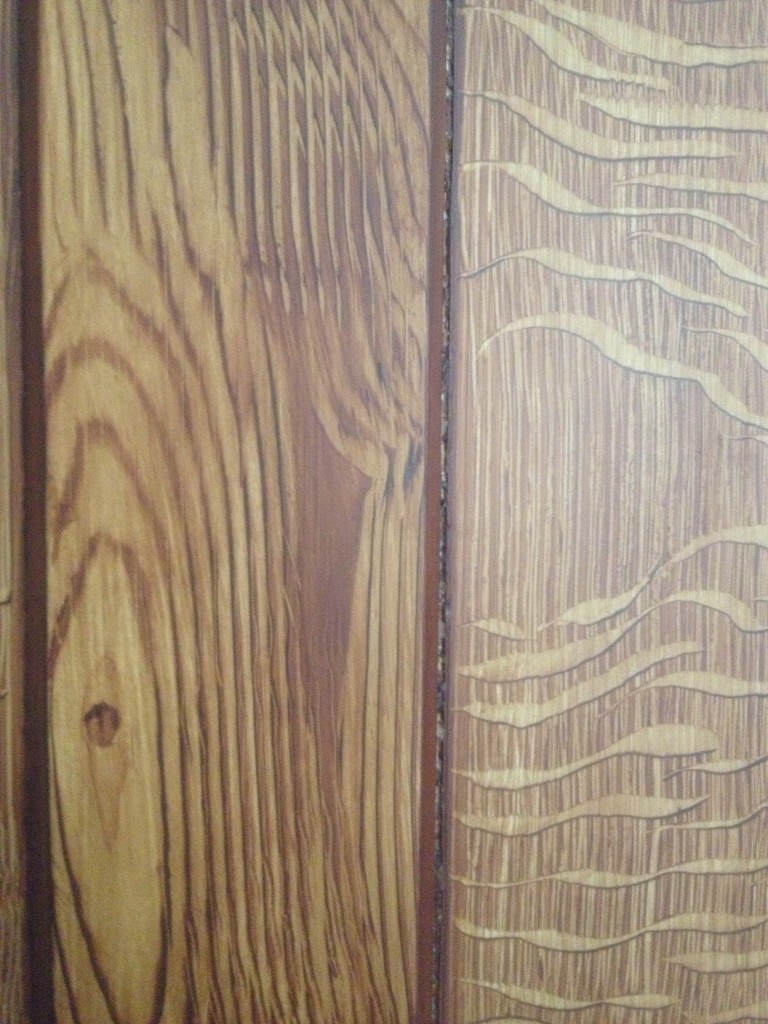
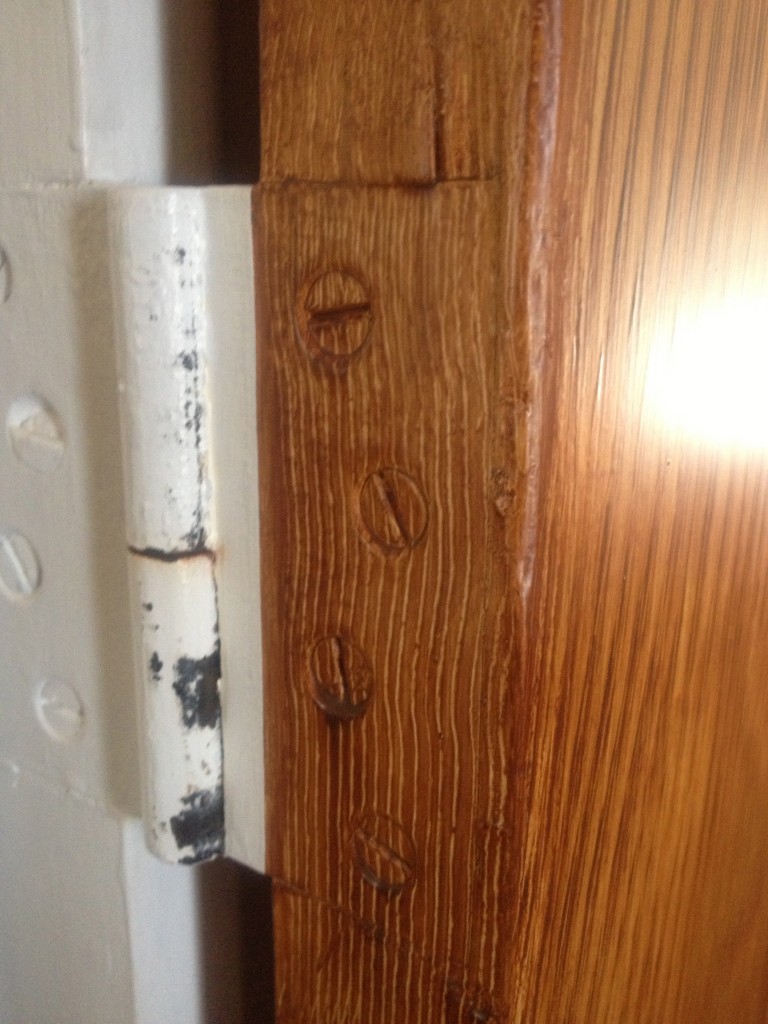
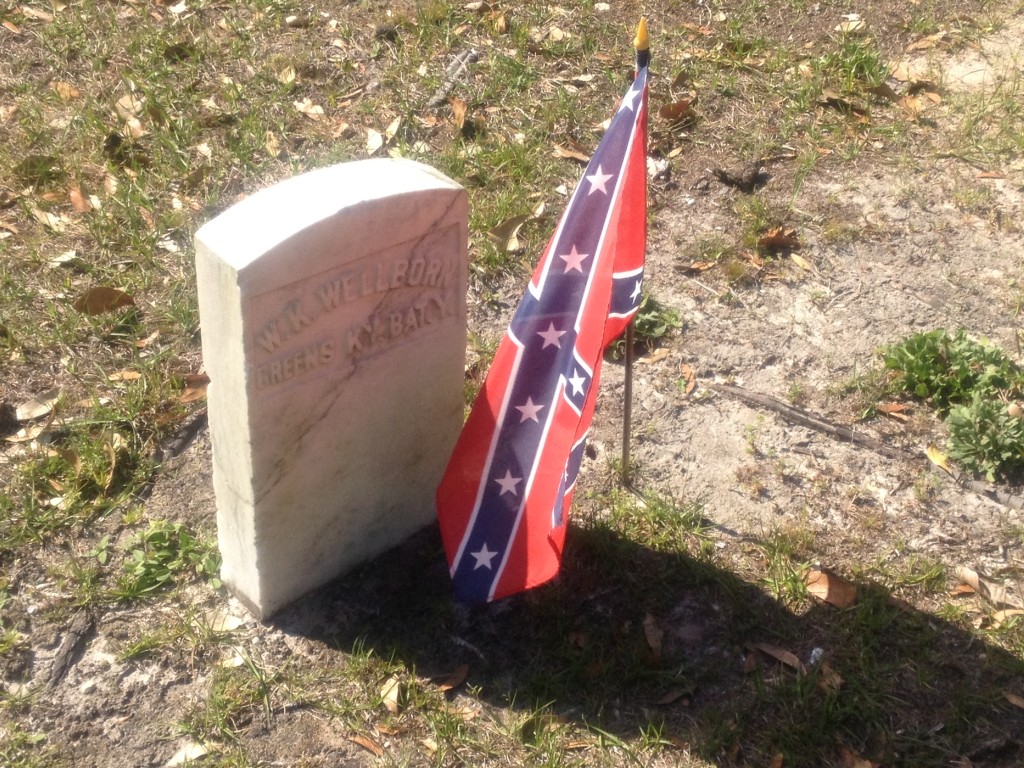

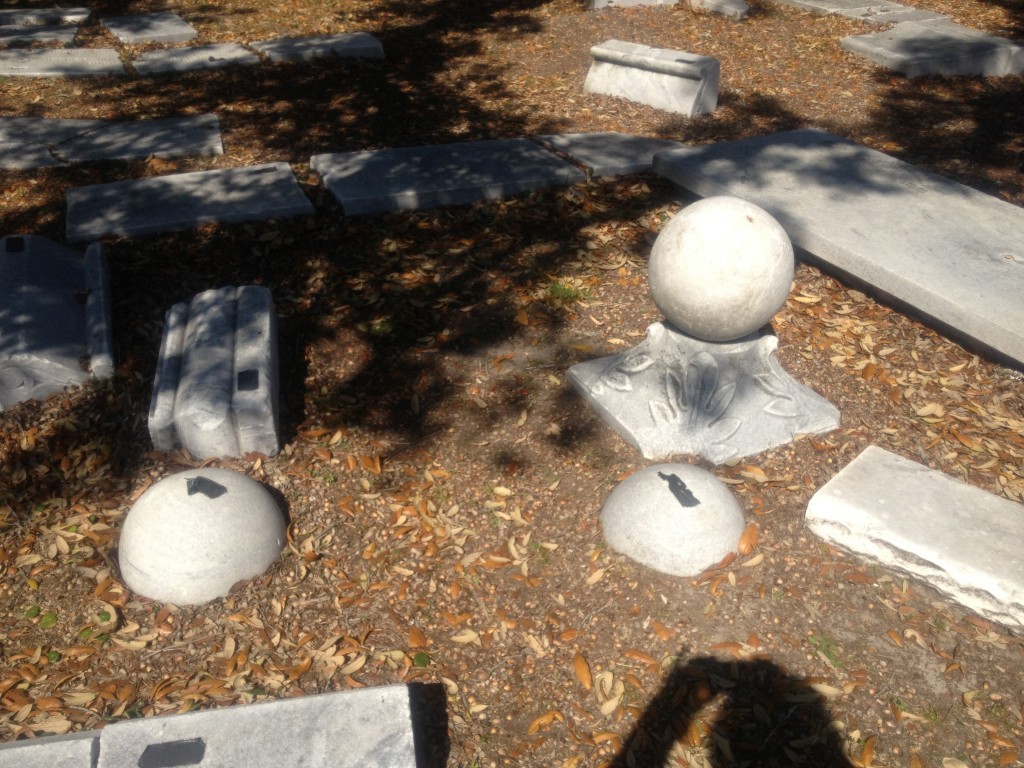
Recent Comments